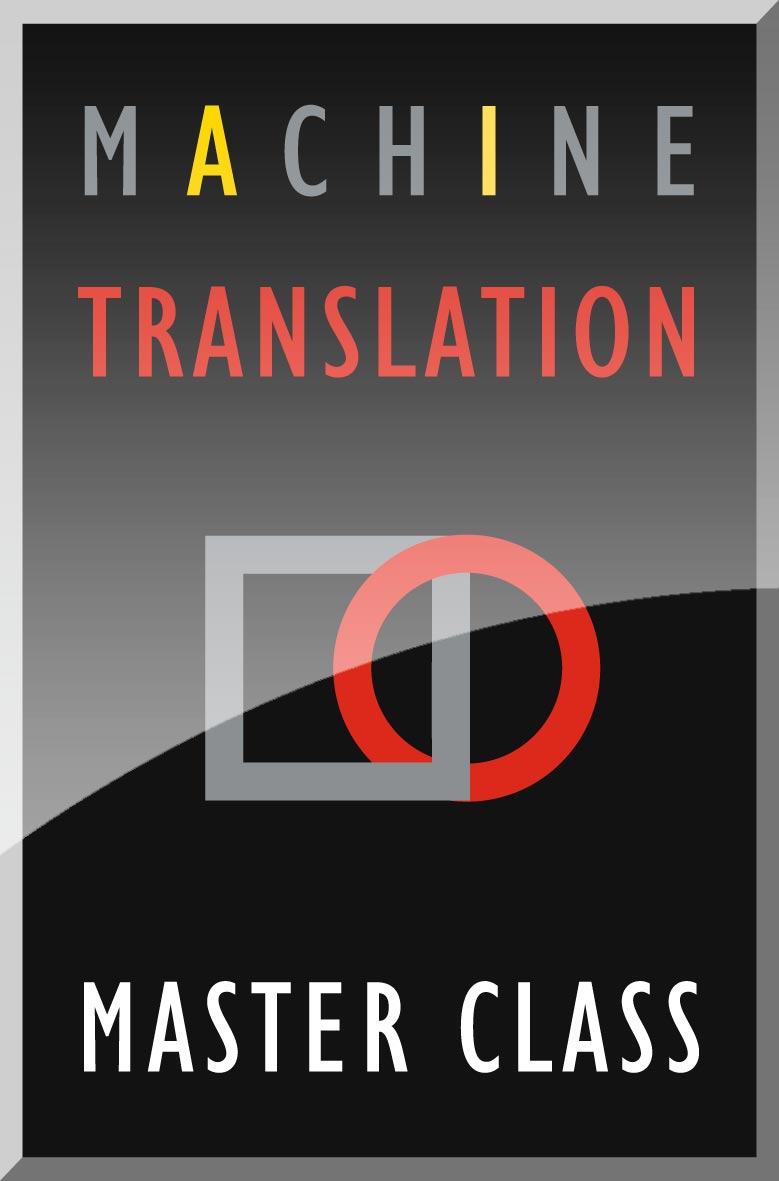Machine Translation Master Course Newsletter – Issue 4

Recently, Alex Bernet, Manager of Master Class Programming at The Localization Institute interviewed me as the instructor for MTMC. In the interview, I talked about a holistic approach to examining machine translation, human purposes as well as the relationship between CAT and MT. Here I will further elaborate these points.
Intentionality – what distinguishes between humans and machines
Imagine yourself alone in a room following a computer program for responding to Chinese characters slipped under the door. You understand nothing of Chinese, and yet, by following the program for manipulating symbols and numerals just as a computer does, you send appropriate strings of Chinese characters back out under the door, and this leads those outside to mistakenly suppose there is a Chinese speaker in the room. This is the famous “Chinese Room Argument” experiment proposed by John Searle in 1980. The person in this experiment is simply an instantiation of a computer program.
But it does not have intentionality. Such intentionality (as computers appear to have) is solely in the minds of those who program them and those who use them, those who send in the input and those who interpret the output. A computer and its programs are unintentional in nature. That is not their weakness; that is exactly the reason why we use them. They are applicable and potentially useful for any particular person who is willing to and able to bring them to life through the construction of intentionality in his mind. In this perspective, computers and their programs are, no matter whether they are a “learning machine” or not, just tools for human beings – no more, no less.
From CAT to MT – expansion of the technological landscape
The language industry never stops its efforts in using technologies to improve the productivity and efficiency of translation. In the past few decades, it has made great strides in leveraging machine power in a localization workflow. To begin with, computer assisted translation (CAT) tools are used to separate translatable content from formatting, segment and prepare the content in a manner that helps human translators focus on the actual translation. CAT leads to a great success of the accumulation of more relevant language data. And with exponential growth in computing power, the industry starts to revisit the possibility of machine translation and seek the feasibility to ask machines to do more, aiming not only to assist humans to translate, but to translate.
Any technology can be viewed from two angles: that from a developer’s point of view and that from a user’s. From a developer’s angle, CAT aims to assist human translators whereas MT to train machines for better accuracy and fluency. From a user’s perspective, however, both CAT and MT are used to help humans realize their goals.
A holistic view: MT as part of the human translation process
MT and CAT are not two separate states. Rather, they are a natural continuation of human’s efforts to use technology. The rise of MT is also a manifestation of the success of CAT tools.
Likewise, machine translation and human translation are not mutually exclusive. From a user’s perspective, both humans and machines are needed in each phase of a translation process, including the analysis of the source text, parsing of the information, terminology management, the actual language conversion, reviewing and quality evaluation, and publishing. At each phase of the localization process, MT and its relevant technologies can provide insights for humans to draw on.
The revolution is under way already. The key to meet potential challenges during this journey is to empower users – translators, project managers, clients and other stakeholders of the localization process – with the most relevant knowledge, skills and best practices so that they can communicate their intentions to machines. By taking a holistic approach to examining machine translation and focusing on the principles behind MT as well as its deployment in various business scenarios, we are getting to the root of the problem.
Takeaways:
- Intentionality as computers appear to have is solely in the minds of those who program them and those who use them.
- Computers and their programs are essentially tools for human beings.
- MT and CAT are not two separate states.
If you want to know more about machine translation, sign up for our next Machine Translation Master Class.
Disclaimer: Copyright © 2021 The Localization Institute. All rights reserved. This document and translations of it may be copied and furnished to others, and derivative works that comment on or otherwise explain it or assist in its implementation may be prepared, copied, published, and distributed, in whole or in part, without restriction of any kind, provided that the above copyright notice and this section are included on all such copies and derivative works. However, this document itself may not be modified in any way, including by removing the copyright notice or references to The Localization Institute, without the permission of the copyright owners. This document and the information contained herein is provided on an “AS IS” basis and THE LOCALIZATION INSTITUTE DISCLAIMS ALL WARRANTIES, EXPRESS OR IMPLIED, INCLUDING BUT NOT LIMITED TO ANY WARRANTY THAT THE USE OF THE INFORMATION HEREIN WILL NOT INFRINGE ANY OWNERSHIP RIGHTS OR ANY IMPLIED WARRANTIES OF MERCHANTABILITY OR FITNESS FOR A PARTICULAR PURPOSE.




